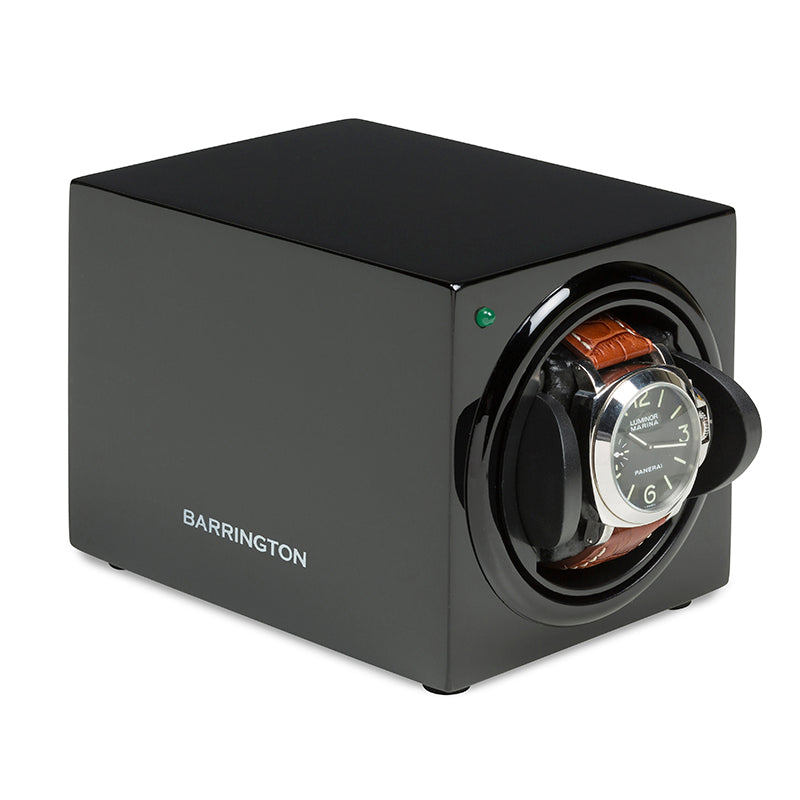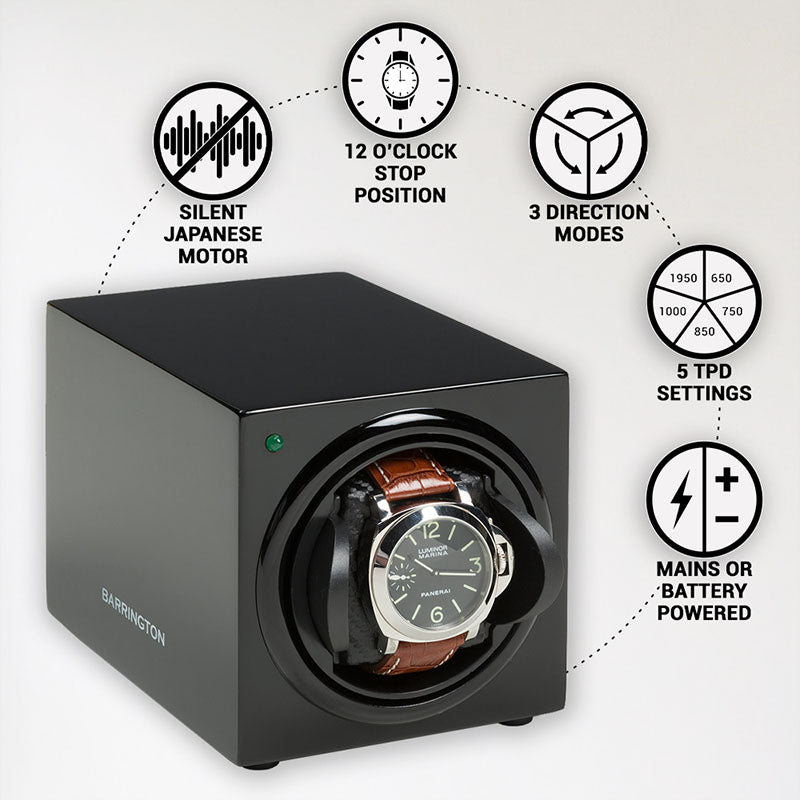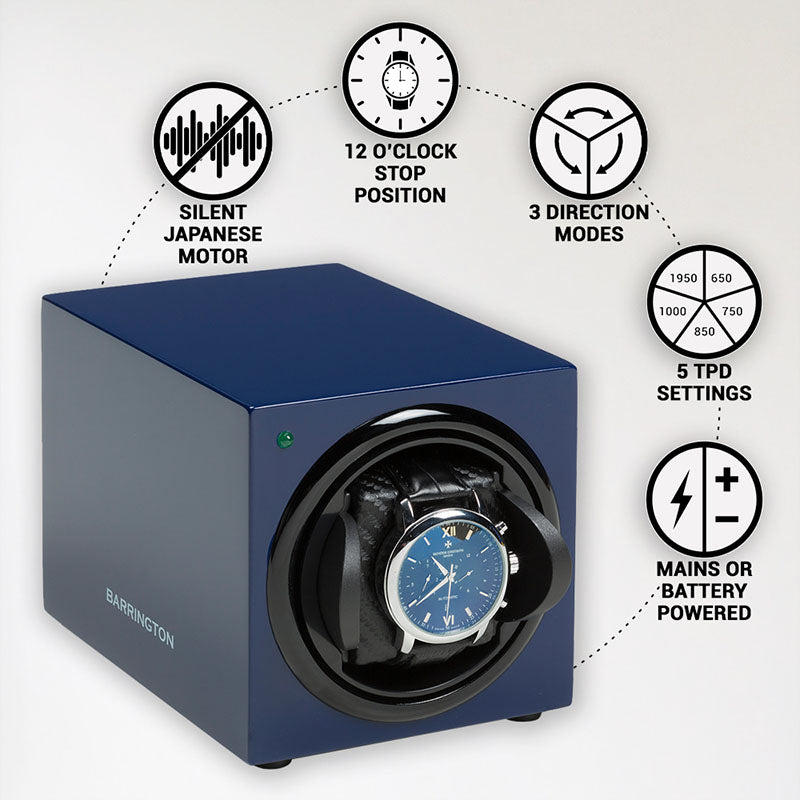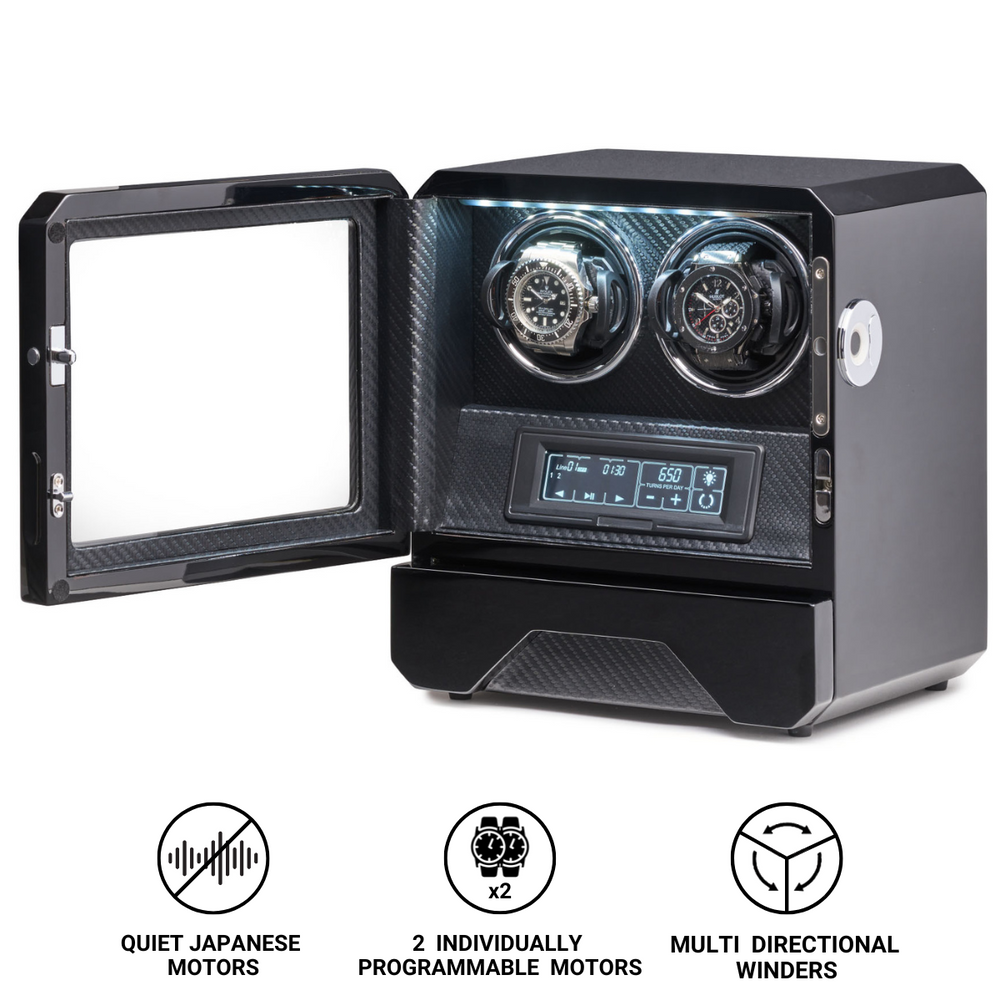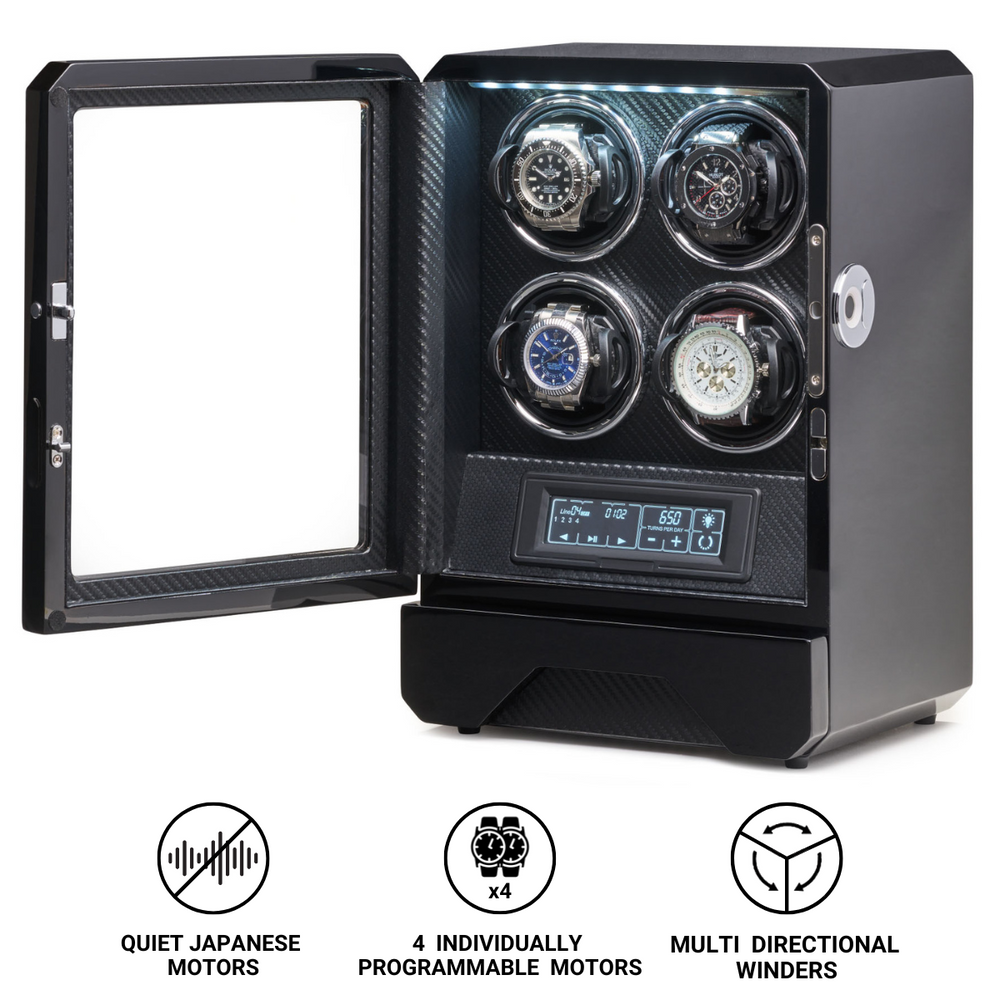What is Deployment Buckle?
The deployment buckle is one of the most significant innovations in modern watch design, combining practicality, safety, and sophistication. Also known as a deployant clasp (a term derived from the French word déployant, meaning "to unfold"), this mechanism allows a watch strap or bracelet to open and close with ease while providing a secure and comfortable fit.
For many enthusiasts, the deployment buckle represents the ideal union of form and function. It enhances the durability of a watch strap, ensures a snug and consistent fit on the wrist, and adds an element of luxury to even the most utilitarian timepieces. From its invention in the early twentieth century to its modern incarnations in high-end watchmaking, the deployment buckle has become a defining feature of both practicality and prestige.
The Origins of the Deployment Buckle
Before the introduction of the deployment buckle, watch straps were typically fastened using a simple tang buckle, similar to a traditional belt buckle. While effective, this design had certain drawbacks. Repeated bending and pulling of the leather strap caused premature wear, and the process of securing the watch could be cumbersome, particularly for those wearing gloves or working in active environments.
In 1910, the Swiss watchmaker Louis Cartier addressed these issues by patenting a new type of clasp that would later become known as the deployment buckle. Cartier’s invention allowed the strap to fold open and closed around a hinged metal mechanism rather than being pulled through a pin and hole system each time it was worn. This design not only extended the lifespan of leather straps but also made putting on and taking off the watch much faster and safer.
By the mid-20th century, the deployment buckle had become a hallmark of luxury watches. Brands such as Rolex, Patek Philippe, and Omega began incorporating it into their high-end models, often refining its shape and mechanics to complement the elegance of their timepieces. Over the decades, the design evolved into numerous variations, but the core principle—comfort, security, and ease of use—has remained unchanged.
How a Deployment Buckle Works
The deployment buckle operates through a series of hinged metal components that fold open and closed in a controlled motion. When fastened, the buckle lies flat against the wrist, giving the strap or bracelet a continuous and polished appearance. When released, the hinged sections unfold, allowing the strap to open wide enough for the watch to be easily removed without unthreading it from a pin.
The mechanism typically includes three main elements:
-
The Folding Blades
These are the hinged arms that form the structural backbone of the clasp. Depending on the design, the buckle may have one, two, or even three folding sections. The blades are usually made from stainless steel, titanium, or precious metals to ensure strength and longevity. -
The Locking Mechanism
This is the component that keeps the buckle securely closed once fastened. It can be a simple friction lock, a push-button system, or a more sophisticated double-security design with multiple release points. -
The Attachment Points
These connect the buckle to the strap or bracelet. In leather straps, one end is usually stitched or glued into the buckle housing, while the other is secured with a pin or spring bar that fits into an adjustable slot.
When worn, the strap wraps around the wrist and tucks neatly into the clasp, which then locks closed with a satisfying click. To remove the watch, the wearer presses the release mechanism, and the buckle unfolds smoothly, allowing the watch to slide off effortlessly.
Advantages of the Deployment Buckle
The deployment buckle offers several important advantages over traditional pin buckles, both in terms of practicality and aesthetics. These benefits have made it the fastening method of choice for many luxury and professional watches.
-
Increased Longevity of the Strap
Traditional pin buckles put constant stress on the leather or fabric strap, causing creasing and eventual tearing near the adjustment holes. The deployment buckle eliminates this problem by minimising bending and friction. The strap remains in near-perfect condition for much longer, extending its usable life. -
Enhanced Security
The folding design ensures that the watch remains attached to the wrist even if the clasp is accidentally released. This makes it far less likely for the watch to fall off and sustain damage. The safety benefit is particularly valuable for heavy or valuable watches. -
Ease of Use
The deployment buckle allows the wearer to put on or remove the watch with one hand, often with a simple push-button or flip-lock action. This convenience makes it especially popular among professionals and sports enthusiasts. -
Comfort and Fit
The clasp provides a more uniform pressure distribution around the wrist, improving comfort during prolonged wear. It also allows for micro-adjustments in size, ensuring a perfect fit even as the wrist expands or contracts due to temperature changes. -
Aesthetic Appeal
A well-designed deployment buckle enhances the visual balance of a watch. It gives the strap or bracelet a clean, continuous look and adds a sense of refinement. Many brands customise the clasp with engraved logos or decorative finishes that reflect their identity.
Types of Deployment Buckles
Although all deployment buckles operate on the same basic principle, they come in several distinct variations tailored to different watch styles and user preferences.
-
Single-Fold (Butterfly) Deployment Buckle
This type features a single hinge that folds the clasp in one direction, creating a smooth and compact closure. It is commonly used on dress watches and leather straps, where a sleek, unobtrusive profile is desired. -
Double-Fold (Dual) Deployment Buckle
In this version, the clasp folds symmetrically in two directions, forming a “butterfly” shape when opened. This design provides excellent balance and distributes pressure evenly across the wrist. It is widely used in both luxury and sports watches for its comfort and aesthetic harmony. -
Triple-Fold Buckle
The triple-fold clasp adds an extra hinge, allowing for a more flexible and compact folding mechanism. It is often found in professional or diving watches where additional security and mobility are required. -
Push-Button Deployment Buckle
Equipped with small pushers on either side, this design offers enhanced safety by requiring a deliberate action to open the clasp. It prevents accidental release and adds a modern, technical look. -
Hidden (Invisible) Deployment Buckle
This type conceals the clasp completely when closed, giving the strap or bracelet a seamless, continuous appearance. It is especially popular in high-end dress watches for its understated elegance.
Each type caters to a different balance of aesthetics, comfort, and security, allowing watchmakers to select the most appropriate style for their designs.
Materials and Craftsmanship
Deployment buckles are typically made from durable metals such as stainless steel, titanium, or gold, matching the case material of the watch. High-end models often feature intricate finishing techniques, including polishing, brushing, or engraving.
In luxury watches, the clasp is not merely a utilitarian part but a piece of craftsmanship in itself. Brands like Patek Philippe, Audemars Piguet, and Vacheron Constantin devote significant attention to the design and finishing of their buckles, ensuring that they reflect the same level of artistry as the watch case and movement.
Some modern versions incorporate advanced materials like carbon fibre or ceramic for reduced weight and added durability. In professional tool watches, deployment buckles may also feature built-in micro-adjustment systems that allow the wearer to fine-tune the fit without tools—an invaluable feature for divers who wear their watches over wetsuits.
The Role of the Deployment Buckle in Modern Watch Design
The deployment buckle has become more than just a fastening mechanism. It is an integral part of the watch’s overall design language and user experience. For luxury brands, it represents refinement, attention to detail, and ergonomic excellence.
In the world of sports and professional watches, the deployment buckle plays a critical role in safety and performance. Dive watches, for instance, often feature heavy-duty deployment clasps with double or triple locks, ensuring they remain secure under extreme conditions. Pilot and racing watches, on the other hand, use lightweight and adjustable clasps designed for quick operation and comfort during extended wear.
In dress watches, the deployment clasp contributes to visual harmony. The hidden clasp style, in particular, provides a seamless aesthetic that enhances the sophistication of formal designs.
Maintenance and Care
Proper maintenance of a deployment buckle ensures both its appearance and functionality remain intact over time. Regular cleaning is essential to remove dust, sweat, and debris that can accumulate around the hinges and moving parts. A soft brush and mild soap solution are usually sufficient for cleaning metal clasps, while leather straps should be treated with appropriate care products to prevent drying or cracking.
Lubrication of the hinge mechanisms is occasionally required for older buckles, although modern versions are generally maintenance-free. For watches used in saltwater or harsh environments, rinsing the clasp with fresh water after exposure is advisable to prevent corrosion.
The Symbolism of the Deployment Buckle
Beyond its technical role, the deployment buckle carries symbolic significance. It represents the evolution of watchmaking from simple functionality to refined engineering. It reflects a philosophy where every detail—no matter how small—is designed to enhance the experience of wearing a timepiece.
For collectors and enthusiasts, the deployment clasp signifies a level of sophistication and care associated with fine horology. It transforms the act of fastening a watch into a tactile ritual, a moment of interaction between craftsmanship and the wearer’s daily life.
Conclusion
The deployment buckle stands as one of the most practical and elegant innovations in the history of watch design. It redefines how a watch is worn, blending convenience, durability, and luxury into a single mechanism. From its origins in early twentieth-century Paris to its role in today’s most prestigious timepieces, it remains an enduring symbol of ingenuity and refinement.
Whether found on a sleek dress watch, a robust diver, or a high-complication masterpiece, the deployment buckle exemplifies the essence of modern horology: the pursuit of precision, beauty, and comfort in every detail. It is a reminder that in fine watchmaking, even the simplest movements—such as closing a clasp—can express a world of craftsmanship and innovation.


